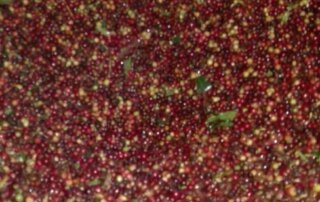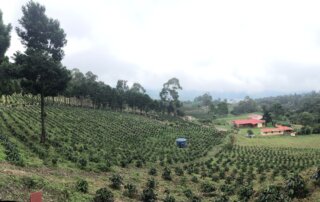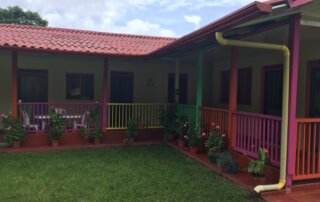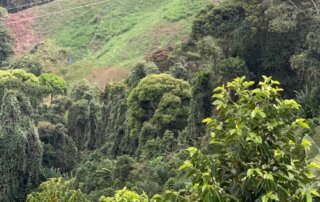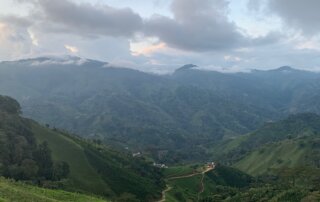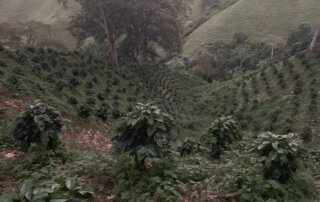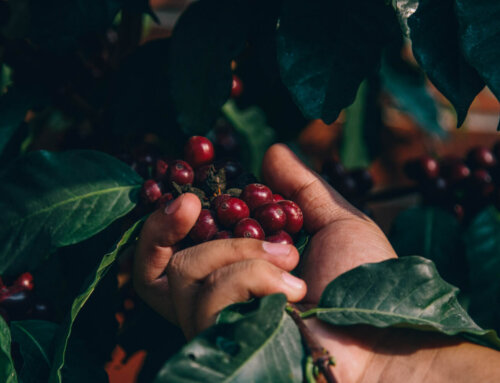Colombia
Decaf Popayan EA
Ethyl Acetate Process
Region : Cauca
Altitude : 1,400–1,800 masl
Process : Typica, Caturra, Castillo
Variety : Washed
Grade : Excelso
Q Score : 84.25
Sweet, super clean and rounded.
Clear notes of panela, dried date and red berries.
Dominant Flavour

Secondary Flavour

ABOUT
The city of Popayán is the capital of the state of Cauca, in the southern half of Colombia. The surrounding coffee region is on the plateau where the Andes mountain range reaches southern Colombia from Ecuador. From there, the Andes breaks into the three separate mountain ranges (or, cordilleras) that cross the country from south to north.
The Cauca and Popayan plateau is at an average of 1,600 meters above sea level and includes the neighboring Purace volcano (pictured above), which has over time has produced the region’s rich soil.
Coffee farms in the region are usually smaller than 5 hectares. The region is also home to several indigenous groups that have been growing coffee for decades.
There are two rainy seasons that produce a main crop and a mid crop — or mitaca — guaranteeing fresh coffee year round. The main crop is between April and December, and the somewhat smaller mid crop is between December and January. All cherries are handpicked and then pulped and washed on the farms. The dry parchment is then sold to a dry mill that arranges the selection and export.
Coffees from near Popayán — as a result of the area’s soil conditions, altitude and washed processing — generally have a very nice aroma, a medium acidity and a medium body. These features combine to present a pleasant, sweet, chocolate aftertaste.
ETHYL ACETATE DECAF PROCESS
Descafecol is the only decaffeination plant in the Andean region of Colombia. The plant relies on pure water from the Navado el Ruis mountain (a snow-capped volcano on the border of the departments of Caldas and Tolima) and natural ethyl acetate from sugar cane plants in Palmira, Colombia.
Ethyl acetate is a natural organic compound (C4H8O2) with a sweet brandy-like smell and is very common in fruits (apples, pears, etc..). It is created during fermentation and contributes to what is often described as the “fruitiness” in a young wine.
At Descafecol, the decaffeination process begins with steaming the green coffee at a very low pressure to remove the silverskin. The beans are then moistened with hot water, which causes them to swell and soften and begins the hydrolysis of caffeine molecules, which is bonded to salts of chlorogenic acid.
The ethyl acetate solvent is then circulated through the beans multiple times until at least 99 percent of the caffeine is removed. A low-pressure, saturated steam is then applied to remove any last traces of the solvent, and finally the coffee is vacuum-dried in drums to remove any water and bring the final moisture level to between 10 and 12 percent.
The coffee is cooled to ambient temperature with fans and then polished with carnauba wax to protect it against humidity.
GRADE
“Excelso” is a grading term for exportable coffee from Colombia, not related to variety or cupping profile.
Colombian coffee is graded according to bean size: Supremo and Excelso beans are harvested from the same coffee trees, but they are sorted by size. Excelso coffee beans are large, but slightly smaller than Supremo coffee beans with a 15/16 screen size compared to 17/18 for Supremo.
Excelso accounts for the greatest volume of coffee exported from Colombia.
POPAYAN LOCATION
PICTURES

